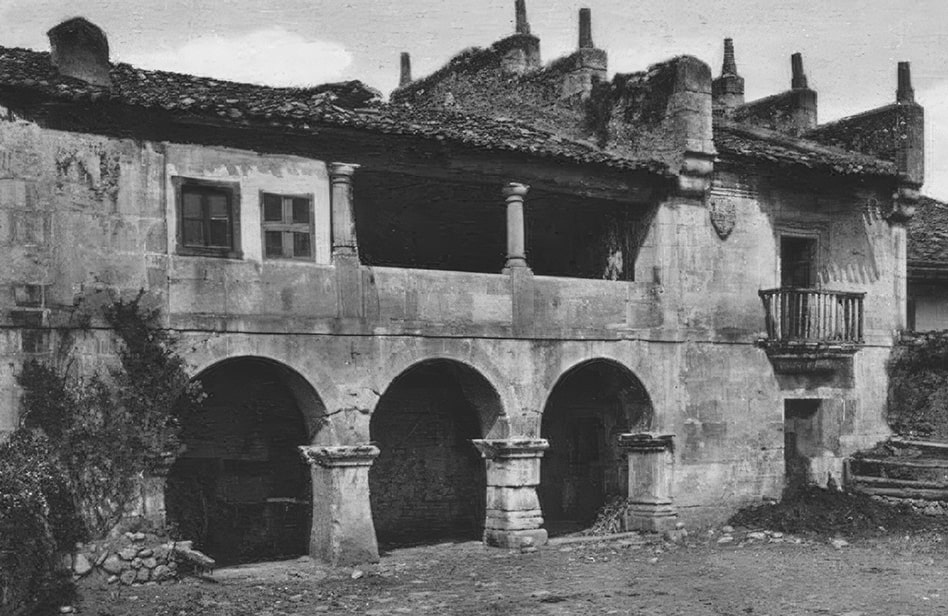The Hotel Palacio de Caranceja estate forms part of the valuable historical legacy of Cantabria and is located in the heart of the small village of Caranceja, a town of just 250 inhabitants with deep historical roots.
Caranceja has a documented past dating back to Roman times, when it was known as Caranzelia. However, the origins of the settlement go back even further, as evidenced by the Palaeolithic archaeological finds discovered in La Peñona de Caranceja or Peña Caranceja, with remains belonging to the Solutrense and Magdalenian cultures. There are also remains from the medieval period, including a bridge of medieval origin and old combustion pits.
The façade of the palace and its wooden gate are listed as Assets of Cultural Interest (BIC), which underlines its heritage value. The main building is an elegant stone mansion built according to the Renaissance palace model, founded in 1627 by the family of Don Pedro Barreda y Yebra as a residence after his marriage to Doña Juliana Velarde y Polanco. The work was directed by the master stonemason and architect Don Diego de Sisniega, a native of the region and renowned for his work on the Monastery of El Escorial until 1583, who throughout his career, participated in other outstanding constructions such as the Cathedral of Segovia or the Palace of the Duke of Lerma in Burgos. Today, some of his works can still be visited in the surrounding area, as can his own house, a testimony to the architectural legacy he left in the region.

The architecture of the palace stands out for its sobriety and harmony. Unlike most local buildings, no stone from the surrounding area was used, but limestone, giving it a stately and distinctive air. The large porch - a hallway with three arcades - and the covered terrace supported by Doric columns, a space we affectionately call 'La Solana', are charming corners where you can sit and enjoy the tranquillity and history that surround this place.
The descendants of the founders include Sancho Barreda, captain in the Indies, and one of his sisters, who married Antonio Gómez de la Torre, uniting the entailed estates of Caranceja and Casar.
Years later, the palace was inhabited by a prominent figure in Spanish history: the ecclesiastic Francisco de Rávago y Noriega, director of the National Library, confessor to King Ferdinand VI and personal friend of Pope Benedict XIV. Rávago renounced the family entailed estate in favour of his brother, and the lineage continued to Don Jesús de Monasterio, a renowned musician and composer, considered one of the two leading representatives of the Spanish violin school. He also resided on the property and it was he who passed the family baton to his granddaughter, Doña Ana María Monasterio González.
Doña Ana María married Don Ciriaco Pérez de Bustamante, a renowned professor, publisher and member of the Royal Academy of History.
In love with the enclave, Don Ciriaco undertook the restoration of the building owned by his wife, as well as the construction in 1920 of a second stone residence with mountain aesthetics, nicknamed "La Casuca". This building was conceived as accommodation for the children of the family, and still retains original details, such as the doorknobs placed at the height of an infant.
The old stables also date from this period, which later, in the recent period, were transformed into the building known as "La Casona", where the reception, dining room and three spacious rooms are located today.
Since 2008, the estate has opened its doors to the public as the Palacio de Caranceja: a boutique hotel and an estate for weddings and events that captivates visitors with its history, beauty and aesthetics.

